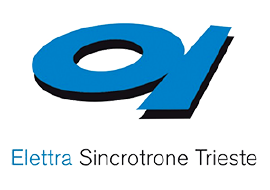FACILITY AT NFFA-TRIESTE
MBE cluster system includes one chamber devoted to XPS analysis. The chamber is equipped with one close cycle cryostat that allows the control of the sample temperature in a range between 25 and 300 K. The chamber is equipped with a double anode (Mg,Al) x-ray source and with a electrostatic hemispherical analyzer (mean radius 200 mm). The X-ray source is non-monochromatized and forms with the photoelectron propagation direction an angle of 90 degrees. The manipulator allows the rotation of the polar angle, in order to change from the (almost) normal emission condition to grazing emission (and therefore from grazing incidence of the x-rays to normal incidence). The figure displays the experimental system, which is also equipped with a sputtering device.






